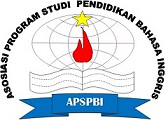ENHANCING STUDENTS’ SPEAKING SKILL THROUGH DIGITAL STORYTELLING
Abstract
Abstract: Speaking is an important productive skill and students need to master this skill. However, some students are still not accustomed to speak English because of some factors, one of them is the lack of using some media that can help to speak English in the classroom. Some teachers tend to explain the materials directly then do the exercises without any media involved. Media could be the solution in students’ speaking skill. The use of media in the classroom are hoped to give the contribution to students in developing different learning styles and making the process of learning more interesting and enjoyable. Telling story digitally comes as the new frame of telling story to replace telling story traditionally. Through the use of multimedia technology, digital storytelling is a form of telling story that enables students to write their own stories using their own words and record their voices or videos based on the digital images they have. This research employs experimental study on the effectiveness of digital storytelling to teach speaking. The samples were experimental class which treated using digital storytelling and control class which treated using picture-cued storytelling. ANOVA with multifactor analysis was used to analyses the data. This study’s findings show that digital storytelling enhances students’ speaking abilities more than picture-cued storytelling.
Keywords
Full Text:
PDFReferences
Abdel-Hack, E. M. and Ahmed Helwa, H S A. (2014). Using Digital Storytelling and Weblogs Instruction to Enhance EFL Narrative Writing and Critical Thinking Skill among EFL Majors at Faculty of Education. International Research Journal. Vol.5 (1), pp. 8-41.
Ahmadi, Reza Mohammad. (2011). The Effect of Integrative and Instrumental Motivation on Iranian EFL Students’ Language Learning. ELT Voices India. Vol. 1 (2), p.7-16.
Akhyak & Indramawan, A. (2013). Improving the Students’ English-Speaking Competence through Storytelling (Study in Pangeran Diponegoro Islamic College (STAI) of Nganjuk, East Java, Indonesia). International Journal of Language and Literature, Vol. 1 (2), 18-24.
Bailey, Kathleen. (2005). Practical English Language Teaching: Speaking. New York: Mc Graw Hill.
Brown, (1997). Audio Visual Instruction: Technology, Media and Methods. New York: Mc Graw, Hill Book Company.
Brown, H. Doughlas. (2001). Teaching by Principle (An Interactive Approach to Language Pedagogy). New York: Prentice Hall.
Brown, H. Doughlas. (2004). Language Assessment (Principles and Classroom Practice). New York: Longman.
Daghari, Zeinab and Bahman Gorjian. (2015). The Effect of Picture-Cued Tasks on The Acquisition And Recall Of Separable And Inseparable Phrasal Verbs By Pre-Intermediate Iranian Efl Students. International Journal of Language Learning and Applied Linguistics World (IJLLALW). Volume 8 (4), April 2015; p. 32-46.
Frazel, Midge. (2010). Digital Storytelling Guide for Educators. Washington: International Society for Technology in Education.
Latif, A. (2013). Using Storytelling to increase Speaking Performance of PAI Students of Muhammadiyah University of Metro (Unpublished Thesis).
N, Shokrpour and Zarei L. (2015). The Efficacy of Explicit Corrective Feedback During Picture-Cued Tasks of Speaking Assessment on EFL Students. Indian Journal of Fundamental and Applied Life Sciences. Vol.5 (1), pp. 3565-3575.
Robin, Bernard R. (2008). The Educational Uses of Digital Storytelling. University of Houston.
Rokni, Abdolmanafi- S. J. and Qarajeh, Masoud. (2014). Digital Storytelling in EFL Classroom: The Effect on the Oral Performance. International Journal of Language and Linguistics. Vol. 2 (4), 2014, pp. 252-257.
Somdee, Manussanun and Suppasetseree, Suksan. (2012). Developing English Speaking Skills of Thai Undergraduate Students by Digital Storytelling through Websites. Surranaree University of Technology, Thailand.
Tahriri, Abdorreza and Tous, Maryam Danaye. (2015). The Impact of Digital Storytelling on EFL Students' Oracy Skills and Motivation. International Journal of Applied Linguistics & English Literature. Vol. 4 (3), p.144-153.
DOI: http://dx.doi.org/10.20527/jetall.v5i2.14330
Article Metrics
Abstract view : 872 timesPDF - 1373 times
Refbacks
- There are currently no refbacks.
This journal is indexed in:


This Journal is listed in:
 Journal of English Teaching, Applied Linguistics and Literatures (JETALL)
Journal of English Teaching, Applied Linguistics and Literatures (JETALL)








.png)



1.png)
